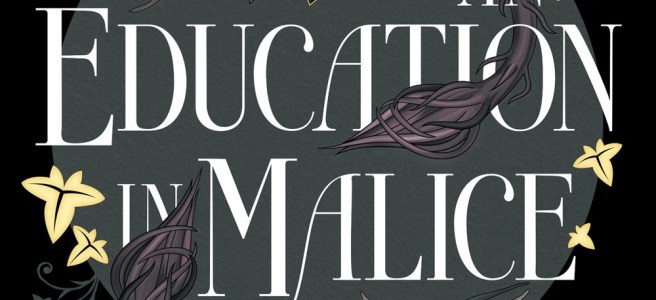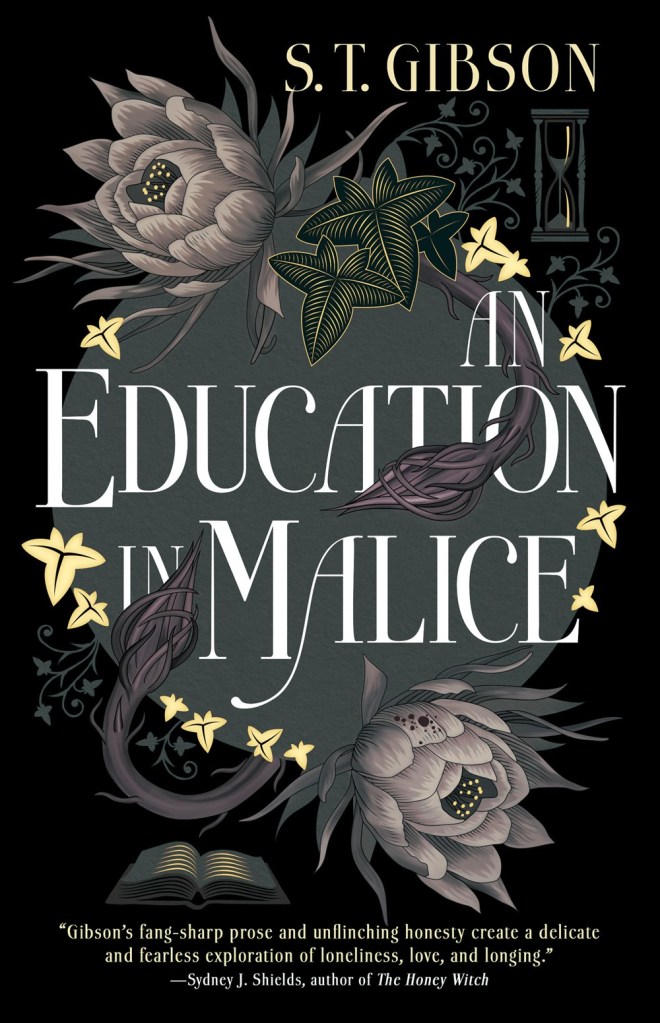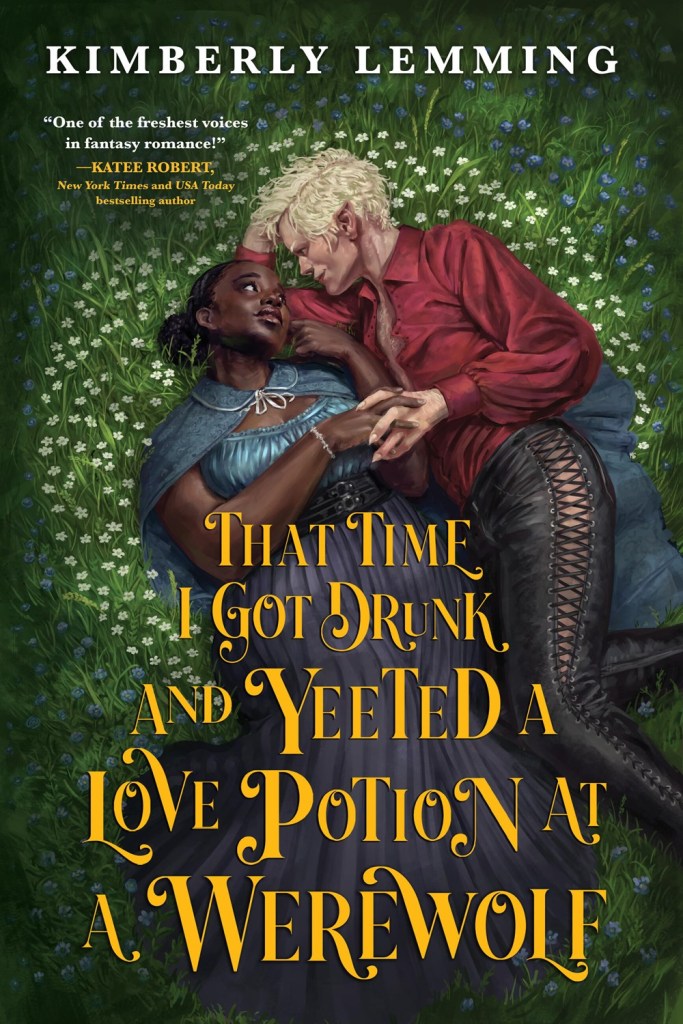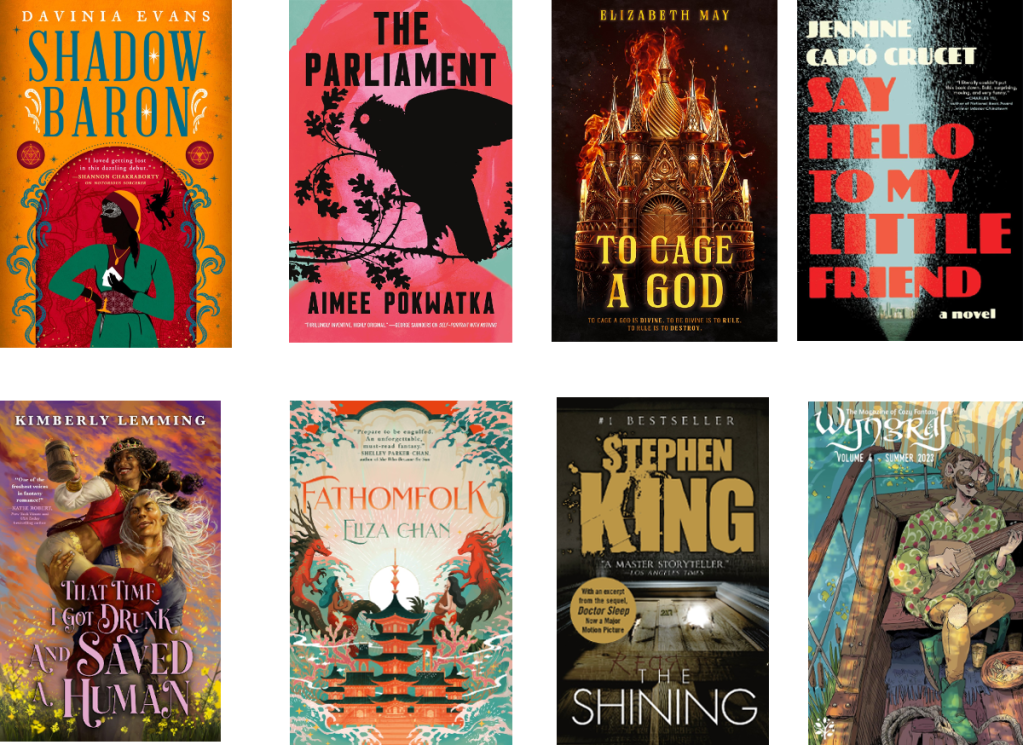**The links in this post are for the book’s StoryGraph page for reference. I do not receive any compensation for clicking links!**
Book: Fathomfolk
Author: Eliza Chan
Pages: 432
Source: Orbit
Publisher: Orbit
Genre: Fantasy
Publication Date: February 29, 2024
Summary:
Welcome to Tiankawi – shining pearl of human civilization and a safe haven for those fleeing civil unrest. Or at least, that’s how it first appears. But in the semi-flooded city, humans are, quite literally, on top: peering down from shining towers and aerial walkways on the fathomfolk – sirens, seawitches, kelpies and kappas – who live in the polluted waters below.
For half-siren Mira, promotion to captain of the border guard means an opportunity to help her downtrodden people. But if earning the trust and respect of her human colleagues wasn’t hard enough, everything Mira has worked towards is put in jeopardy when Nami, a know-it-all water dragon – fathomfolk royalty – is exiled to the city. When extremists sabotage the annual boat race, violence erupts, as does the clampdown on fathomfolk rights. Both Nami and Mira must decide if the cost of change is worth paying, or if Tiankawi should be left to drown.
My Review:
I received a free advanced reader’s copy of Fathomfolk by Eliza Chan from Orbit in exchange for an honest review. Thank you, Orbit!
Fathomfolk takes place in a world that is mostly ocean populated by humans and myriad, mythical sea creatures known collectively as fathomfolk. Fathomfolk live in underwater cities. Humans live on islands scattered far apart, but in spite of this, it is humans who are in control. They have technology and industry that has helped them thrive. Unfortunately, it has also polluted the surrounding waters so badly that fathomfolk are forced to seek refuge within human cities. One such city is Tiankawi, and this is where the majority of the story takes place.
Mira has lived in Tiankawi all her life. A half-siren, Mira has seen first-hand how fathomfolk are treated by humans, and she seeks to make life better for her fellow folk in the city. She has managed to become the captain of the border guard of the city. While she knows she was only chosen as a token member, she hopes to enact real change with the little power she’s been given. Both she and her partner, Kai (the water dragon ambassador) do everything they can to improve the lives of fathomfolk in Tiankawi while working within the humans’ political system.
Not everyone agrees that the way forward should be peaceful, though. A rebel group, known as The Drawbacks, feel the only way forward is to fight fire with fire. So, when Kai’s rebellious sister Nami is exiled to Tiankawi for her latest transgressions, it’s natural she would be attracted to The Drawbacks. Now, Mira and Kai have to look out for Nami and find a way to stop The Drawbacks from causing the destruction of Tiankawi and the only way of life Mira has ever known.
The story of Fathomfolk manages to touch on several different themes that are relevant in the real world as well. These themes range from environmental destruction creating climate refugees to discrimination and racism to rebellion and exploitation of the poor. The story itself is well-written and addictive, but there is a lot going on in the background to unpack.
First of all, just like today, humans and their unchecked industry have destroyed much of the environment. The reason the world is mostly flooded is due to climate change, but humans didn’t stop there. The polluted run-off from their cities has wreaked havoc on the oceans that the fathomfolk call home. This, along with in-fighting and civil war amongst the fathomfolk over what should be done about the humans, have forced many fathomfolk to flee to the very cities that rendered their homes unlivable.
This kind of irony is present throughout the book. In fact, one would think that being forced to do what it takes to survive would help the fathomfolk band together. In some cases this is true, like with The Drawbacks, but in most cases fathomfolk treat their fellows just as poorly as they are treated by humans. There is rampant discrimination and racism within Tiankawi. Humans discriminate against fathomfolk, and fathomfolk discriminate against interracial couples and families. I found myself wishing the fathomfolk would put aside their petty differences to work together once and for all.
Unfortunately, humans did a good job of essentially subjugating all fathomfolk within Tiankawi. One of the requirements for legal entry into the city is to be fitted with something called a pakalot. It’s a bracelet that not only limits fathomfolks’ ability to use their magic, called waterweaving, but it also causes pain to the wearer if they even think too negatively about a human. So, like many times in our real history, humans ruled the fathomfolk with fear and pain. There ends up being an even more nefarious reason for the pakalots, but you will have to read the book to find that out for yourself. Needless to say, it made me pretty angry.
Obviously, I really enjoyed this book! It used a fantasy story to really illustrate and discuss some touchy but important topics. The ending was especially unexpected, and I’m very excited to see what happens in the next book. I believe this is a planned trilogy, and I’m happy about that. The only annoying thing about the story was Nami’s character. While she does experience growth, she is incredibly naïve, and she refuses to recognize when the person she’s interested in shows his true colors. I felt she was too forgiving. Other than that little annoyance, I found the book to be enjoyable and challenging in equal measure.
My Rating:
I gave Fathomfolk by Eliza Chan five out of five stars. The story is beautifully written, and the characters have depth. I cared about what happened to all of them, even the ones trying to manipulate people in the background. I loved how Eliza Chan was able to build this world and create these characters while still touching on important topics like environmental change, refugees, and exploitation. If you’re looking for your next fantasy read, definitely give this a shot!
Have you heard of Fathomfolk? Is it on your TBR? Let me know in the comments!





















